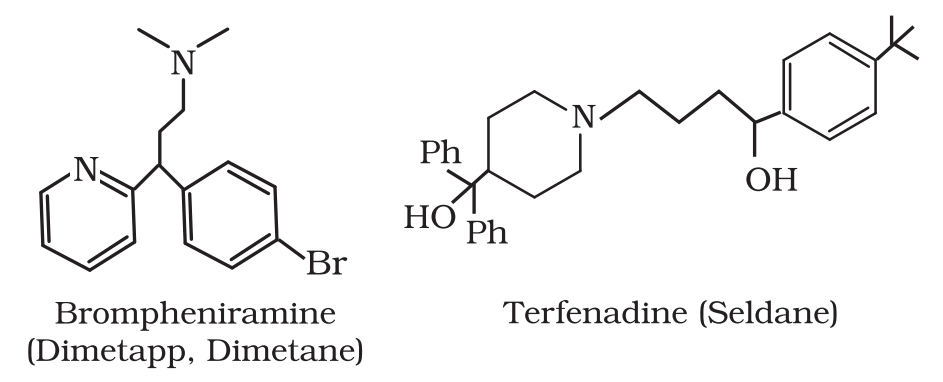Histamine is a potent vasodilator. It has various functions. It basically contracts the smooth muscles in the bronchi and gut and relaxes other muscles. Histamine is also responsible for the nasal congestion caused by common cold and allergic response to pollen. The permeability of white blood cells is increased by histamine and this allows the pathogens to get engaged with the infected tissues.Antihistamine is a class of drugs that inhibit the physiological action of histamines. Synthetic drugs like brompheniramine and terfenadine, act as antihistamines.
Action of antihistamine
- When our body comes in contact with components such as pollen, dust mites, pet dander etc, a chemical called histamine is formed that triggers an allergy.
- This allergy causes: swelling of the nose, running eyes, and sometimes even itching in the mouth.
- Antihistamines protect us from the allergy by blocking the action of histamines. They work against the symptoms of different kinds of allergies, which include hay fever, food allergy, etc.
- But their application is limited as they cannot be used to relieve every kind of symptoms.
- If we suffer from a nasal congestion, the doctor will advise an intake of decongestant. Some drugs are formed by the combination of antihistamines and decongestants.
- Antihistamines are used in the treatment of any allergy. These drugs actually interfere with the natural action of histamines.

Antihistamine classification
Antihistamines are basically divided into two.
- First generation Antihistamine
H₁ antagonists, also called H₁ blockers, are a class of medications that block the action of histamine at the H₁ receptor, helping to relieve from allergic reactions. - Second generation Antihistamine
- Generally they do not cause the sedation and drying which is observed in first generation antihistamines
- They do not cross the blood-brain barrier as readily as First Generation compounds
- Lipophobicity
- Large molecular size
- Electrostatic charge
Side effects of antihistamines
Antihistamines are harmful in nature, some are comparatively more harmful than the others.
- The older groups i.e. the first generation of antihistamines are more harmful, for example Benadryl and Chlor-Trimeton. They cause drowsiness particularly.
- On the other hand, the newer-generation of antihistamine is comparatively less harmful, for example Allegra, Clarinex, and Zyrtec. T
- The main side effect of antihistamines is Dry mouth.
- Their use should be avoided as much as possible.